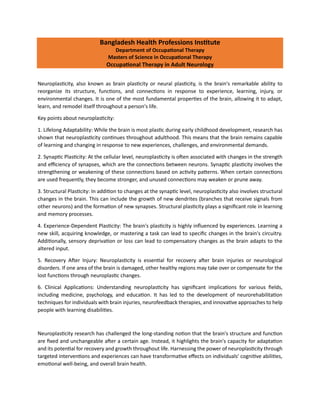This document discusses neuroplasticity and its implications for rehabilitation after neurological injury or disorders. It defines neuroplasticity as the brain's ability to reorganize and form new connections in response to experiences and environment. The key mechanisms of neuroplasticity occur at the synaptic and structural levels through processes like long-term potentiation and neurogenesis. Leveraging neuroplasticity in rehabilitation involves targeted interventions like task-specific training, sensory stimulation, and cognitive exercises to promote brain reorganization and recovery of functions. A multidisciplinary approach and the individual's active participation are important for success.



